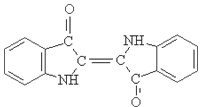best dyeing with indigo
The Art and Science of Dyeing with Indigo
Indigo dyeing is a timeless craft that has captivated cultures around the globe for centuries. Known for its rich, deep blue hues, indigo is derived from the leaves of the indigo plant (Indigofera tinctoria) and has been a staple in textile production, artisan crafts, and even cultural identity. The process of dyeing with indigo is both an art and a science, combining traditional techniques with a deep understanding of chemistry and the natural world.
History of Indigo Dyeing
The use of indigo as a dye dates back to ancient civilizations, with evidence of its application found in Egypt, India, and Japan. Each culture developed unique methods and styles, contributing to a diverse tapestry of indigo products. For example, the traditional Japanese technique of shibori involves folding, twisting, and binding fabric to create intricate patterns that resist dye, resulting in stunning visual effects. In Africa, indigo dyeing is deeply embedded in social and cultural practices, often used for ceremonial garments.
The Chemistry of Indigo
Indigo is remarkable not only for its color but also for the chemical processes involved in converting the plant’s natural pigment into a usable dye. The dye itself is not water-soluble in its natural form when extracted from the plant. It must undergo a reduction process, transforming it into a soluble form known as leucoindigo. This process, facilitated by a combination of water, an alkaline solution (such as soda ash), and a reducing agent (like fermented bran or even certain sugars), allows the dye to bond with the fibers of the fabric.
During the dyeing process, the fabric is submerged in the indigo vat, where it absorbs the dye. As it comes into contact with air, the leucoindigo oxidizes, resulting in the striking blue color that characterizes indigo-dyed materials. This unique property of indigo makes it particularly rewarding for textile artists, as multiple dips in the dye bath can yield varying shades of blue, from pale sky to deep navy.
Techniques for Best Results
best dyeing with indigo

For those looking to explore indigo dyeing, several techniques can enhance the final product and provide a satisfying experience. Here are some tips for achieving the best results
1. Preparation of Fabric Start with natural fibers like cotton, linen, or wool, as these materials absorb indigo dye best. Pre-soaking in a solution of water and soda ash can help the fibers better absorb the dye.
2. Creating the Indigo Vat The success of your dyeing project heavily relies on the indigo vat. Properly preparing the vat is crucial. Ensure you have the right temperature (around 80°F or 27°C), sufficient reducing agent, and a balanced pH.
3. Dyeing Technique Experiment with different dyeing techniques to create unique patterns. Techniques like tie-dye, shibori, or even simple folding can yield beautiful and unpredictable results. The key is to embrace the process and be open to surprises.
4. Layering for Depth Indigo dyeing allows for layering, meaning you can dip the fabric multiple times to achieve depth of color. Starting with lighter shades and gradually building up to darker tones can make your dyeing projects stand out.
5. Post-Dye Treatment After dyeing, rinse the fabric in cold water and allow it to oxidize. This helps set the dye and enhances the richness of the color. Washing the fabric with a gentle detergent will help maintain the vibrancy of your indigo creations over time.
Conclusion
Dyeing with indigo is not just a craft; it is a form of storytelling, a connection to history, culture, and the environment. Whether you are a seasoned artisan or a curious beginner, the process of creating with indigo can be deeply fulfilling. As you explore the nuances of this ancient dye, you join a global tradition that celebrates creativity, craftsmanship, and the beauty of the natural world. Embrace the journey, experiment with techniques, and most importantly, have fun as you immerse yourself in the mesmerizing world of indigo dyeing.
-
The Timeless Art of Denim Indigo Dye
NewsJul.01,2025
-
The Rise of Sulfur Dyed Denim
NewsJul.01,2025
-
The Rich Revival of the Best Indigo Dye
NewsJul.01,2025
-
The Enduring Strength of Sulphur Black
NewsJul.01,2025
-
The Ancient Art of Chinese Indigo Dye
NewsJul.01,2025
-
Industry Power of Indigo
NewsJul.01,2025
-
Black Sulfur is Leading the Next Wave
NewsJul.01,2025

Sulphur Black
1.Name: sulphur black; Sulfur Black; Sulphur Black 1;
2.Structure formula:
3.Molecule formula: C6H4N2O5
4.CAS No.: 1326-82-5
5.HS code: 32041911
6.Product specification:Appearance:black phosphorus flakes; black liquid

Bromo Indigo; Vat Bromo-Indigo; C.I.Vat Blue 5
1.Name: Bromo indigo; Vat bromo-indigo; C.I.Vat blue 5;
2.Structure formula:
3.Molecule formula: C16H6Br4N2O2
4.CAS No.: 2475-31-2
5.HS code: 3204151000 6.Major usage and instruction: Be mainly used to dye cotton fabrics.

Indigo Blue Vat Blue
1.Name: indigo blue,vat blue 1,
2.Structure formula:
3.Molecule formula: C16H10N2O2
4.. CAS No.: 482-89-3
5.Molecule weight: 262.62
6.HS code: 3204151000
7.Major usage and instruction: Be mainly used to dye cotton fabrics.

